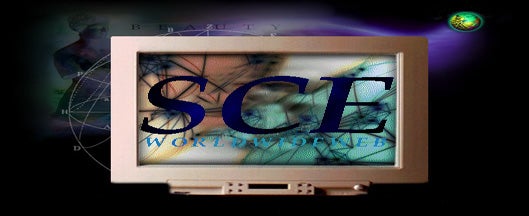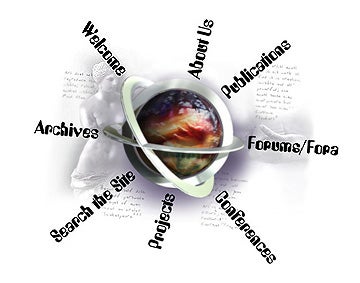

Report: Intellectual Property and the Construction of Authorship A Collaborative Research Project of the Society for Critical Exchange directed by Peter Jaszi and Martha Woodmansee
An "author" in the modern sense is the sole creator of unique "works" the originality of which warrants their protection under laws of intellectual property known as "copyright" and "authors' rights." So firmly established is this notion that it persists and flourishes even in the face of contrary experience.
Experience suggests that our creative practices are largely derivative, generally collective, and increasingly corporate and collaborative. Yet we continue to think of genuine authorship as solitary and originary, and may even imagine that the value we assign it is timeless and universal. But as the work of the project participants demonstrates,[1] this notion is a relatively recent invention, the product of a radical reconceptualization of the creative process that culminated less than two centuries ago in the heroic self-presentation of the romantic poets. As they saw it, genuine authorship is originary in the sense that it results not in a variation, an imitation, or an adaptation, certainly not in mere re-production, but in an utterly new, unique-- in a word, "original" -- work which, accordingly, may be said to be the property of its creator and to merit the law's protection as such. We pass over the multiple motives for this Romantic mystification of writing in order to call attention to the way in which, with its emphasis on originality and self-declaring creative genius, this notion of authorship operates to marginalize or deny the work of many creative people: women, non-Europeans, artists working in traditional forms and genres, individuals engaged in group or collaborative projects, to name but a few.
Although the phenomenon we have described is grounded in the traditions of literary/aesthetic theory, it is upheld b the laws of copyright and authors' rights, which evolved simultaneously and, through the mid-nineteenth century, in conversation with literary/aesthetic theory.[2] Rooted as it is in the same Romantic conception of authorship, this body of law tends to reward certain producers and their texts while devaluing others.
Thus, it is conventional wisdom that no copyright can exist in a work produced as a true collective enterprise (rather than by one or more identifiable or anonymous "authors"); that no copyright subsists in a work which is not "fixed" (thus excluding a wide range of improvised works and works of oral tradition); that copyright does not extend to works which are not "original" (thus ruling out protection for folkloric productions which are valued for their fidelity to tradition rather than their derivations from it); and that copyright does not protect "basic" components of cultural productions (thus barring protection of, for example, the rhythms which are most characteristic of both traditional musical forms and certain contemporary forms such as rap and hip-hop).
The exclusive tenancies inherent in this two-century-old conception of authorship operate both within the developed countries of the Americas and Western Europe, and between developed and developing countries, and the conventional law of international copyright is one of the principal agencies through which those tendencies are realized. At least since 1886, the date of the first Act of the Berne Convention for the Protection of Literary and Artistic Works, international copyright has been premised squarely on a vision of "authors' rights" which carries with it the full range of Romantic associations. Neither Berne, nor any other major international agreement, requires signatory states to afford legal protection to works falling outside the purview of traditional authorship.
One object of the SCE project is to extend and deepend the "critique of authorship" just sketched through a series of foundational investigations which place the phenomenon of cultural authority in social, economic, and historical perspective. The project was launched at an interdisciplinary conference, "Intellectual Property and the Construction of authorship," which we organized in April 1991 at Case Western Reserve University. A selection of the papers presented at the conference appeared as a special issue of the Cardozo Arts & Entertainment Law Journal (Vol. 10, No. 2 [1992], 277-725) and has recently been reprinted with a new introduction as The Construction of Authorship: Textual Appropriation in Law and Literature (Durham, Duke UP, 1994). In a second phase of the project we brought together twenty-four scholars and practitioners of the law and literature/rhetoric at the annual meeting of the Modern Language Association in December 1992 to consider "The Law of Texts: Copyright in the Academy." A comprehensive summary of the conclusions reached by this forum may be found in College English 57 (1995): 769-87. In a third phase funded by the Rockefeller Foundation, "Cultural Agency/Cultural Authority: Politics and Poetics of Intellectual Property in the Post-Colonial Era," we convened twenty-five lawyers, cultural historians, policy makers, anthropologists, development specialists, and representatives of culture industries from the developed and developing worlds for a week-long seminar in March 1993 in Bellagio, Italy. A policy paper delivered at the conference is currently circulating internationally, and a volume of conference papers, contracted for publication by Duke University Press, is in preparation. The work of Bellagio has subsequently been carried forward in programs devoted to the "Legal Foundations of Cultural Authority" and the "International Politics of Cultural Appropriation" respectively at the 1993 and 1994 MLA conventions. Issues of narrower domestic and institutional concern, meanwhile, have been taken up at regional MLA meetings and at the annual conference on College Composition and Communication. Thus, for example, in 1994 the Midwest MLA was the site of a program on the construction of the notion of plagiarism in the academic setting in relation to the traditional privileging of authorship over corporate forms of cultural production. Finally, a new book series, "The Cultures of Authorship: From Gutenberg to Internet" is being launched under our editorship by Duke University Press to investigate historical and theoretical relationships between the ways in which information commodities are produced, disseminated, and consumed, on the one hand, and the process by which the meaning of texts is constructed, on the other.
As these activities suggest, another object of the SCE project is to operationalize the "critique of authorship." By renewing the conversation between the law and literary/aesthetic theory that broke off in the nineteenth century we hope to develop concrete alternative models of intellectual property protection. One example of why this matters can be found in the debate that is shaping over control of the emerging electronic information environment. Many of us have begun to see our careers as scholars and teachers as intimately bound up with the progress of electronic data technology -- and particularly the technology of digital networks, whether the Internet or the promised Electronic Date Superhighway of the future. And as anyone knows who has used access this text at this site, the network environment of today is polyvocal, polymorphous, and even chaotic, characterized by the exchange of tremendous amounts of miscellaneous information with little apparent concern for claims of proprietorship. Jay Bolter has described these digital communication networks as constituting "a vast hypertext that spreads its reticulations over the United States and around the world. It is a text that changes minute by minute, as users add messages and as moderators and systems delete them. No one writer contributes more than a tiny fraction of the messages, and no reader can read more than a fraction."[3]
From our standpoint as teachers and scholars, the liberating potential of all this may lie precisely in the networks' freedom from the sorts of controls -- legal and otherwise -- to which other information technologies such as print are subject. Through the networks we can envision the end of publishing as we have known it, but to the traditional proprietors of information, that vision is a profoundly threatening one. As Pamela Samuelson has noted, the very ease with which material can be copied and distributed digitally makes copyright owners want to submit the Internet and the networks of the future to more rigorous copyright discipline.[4]
In short, a battle is shaping over the future of the Internet and its successors. On one side are those who see its potential as a threat to traditional notions of individual proprietorship in information, and who perceive vigorous extension of traditional copyright principles to the new information environment as the solution. On the other side are those who believe that he network environment could become a new cultural "commons" if its development is not stifled by premature or excessive legal controls.
Given the stakes, it seems unlikely that a network "commons" will be preserved as a pristine "proprietor-free zone." Some measure of regulation is inevitable, and it may even be essential if information proprietors are to participate fully in the networks. But scholars and teachers have a stake in assuring that the form of that regulation meets their needs as well as those of information proprietors. We must insist that discussion of the legal future of the networks is informed by a considered balancing of competing interests rather than by the charged mythology of Romantic "authorship." Having played a key role in the generation and perpetuation of that mythology in the past, scholars and teachers of literature and composition especially have an obligation to help refocus the debate over the futures of information technology.
1. See Martha Woodmansee, "The Genius and the Copyright: Economic and Legal Conditions of the Emergence of 'The Author,'" Eighteenth-Century Studies 17 (1984), 425-48; Mark Rose, "The Author as Proprietor: Donaldson v. Becket and the Genealogy of Modern Authorship," Representations 23 (1988), 51-85, and Authors and Owners: The Invention of Copyright (New York: Oxford UP, 1991); Margreta deGrazia, Shakespeare Verbatim: The Reproduction of Authenticity and the 1790 Apparatus (Oxford: Clarendon, 1991); and more generally, Andrea Lunsford and Lise Ede, Singular Texts/Plural Authors: Perspectives on Collaborative Writing (Carbondale: Southern Illinois UP, 1990); Peter Jaszi, "Towards a Theory of Copyright: The Metamorphoses of 'Authorship,'" Duke Law Journal (1991), 455-502; and James Boyle, "A Theory of Law and Information: Copyright, Spleeens, Blackmail and Insider Trading," California Law Review, Vol. 80, No. 6 (1992), 1415-1540.
2. For specifics of this conversation between law and literary/rhetorical theory, see our introduction to The Construction of Authorship: Textual Appropriation in Law and Literature ed. Martha Woodmansee and Peter Jaszi (Durham, Duke UP, 1994).
3. Unpublished paper presented at the forum on "The Law of Texts: Copyright in the Academy" at the annual meeting of the Modern Language Association, New York, December 27-30, 1992.
4. Ibid.
Clicking endnote numbers will return you to their corresponding citations, or you may click here to return to beginning of text.




